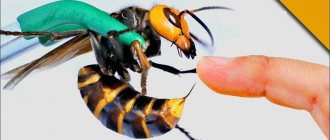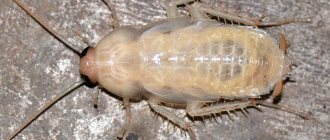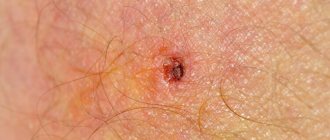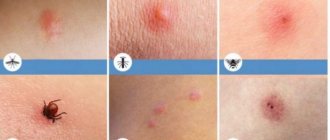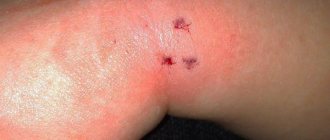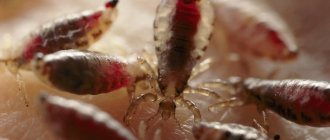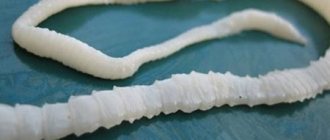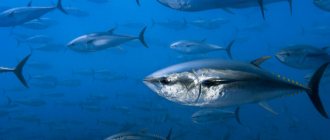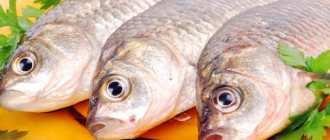Recently, the cuisines of many peoples of the world offer exotic fish dishes that do not undergo proper heat treatment. Raw, smoked or salted fish is found on the holiday tables of every second inhabitant of the planet, while few people think about how many dangers such food implies. Fish and meat carcasses are the most common sources of helminthiasis in humans, although many fish worms do not pose a danger to the human body. For example, red worms in fish are phylometra, which are safe for humans and only spoil the presentation of the fish.
What to do if you eat fish with worms?
The main rule for eliminating the danger in the presence of worms in fish is sufficient heat treatment of the food product during the cooking process. Even if there were any helminths, if prepared correctly, they were all neutralized. At temperatures of -25 degrees and below, fish are considered disinfected after 15 hours of frost treatment. In the case of salting, the helminths die within 10-14 days; dried fish are kept for at least 3 weeks.
If the fish was raw or undercooked, and worms were found inside, you need to consult a doctor and get tested. In addition, prophylactic use of anthelmintics would be appropriate. The carp family is considered the most dangerous fish species.
The larvae live in their body until the final host becomes infected with them.
In coastal and river areas, where fishing for many is the main way to provide food for their families, infection with worms occurs more often than in continental areas. This is due to the fact that the methods of procurement and preparation of meat practiced by the local population do not always provide for the correct heat treatment of seafood.
Worth knowing!
Among the worms that infect the inhabitants of aquatic spaces, the most dangerous are those species that in the larval phase have dimensions of 2..5 mm, which makes them invisible when cutting the product.
Sturgeon species do not pose a risk of helminth infection.
In the sea
The anisakid family belongs to the group of nematodes, that is, in terms of body shape they are roundworms. The length of adult individuals reaches 65 mm in females and 55 mm in males. The maximum size of the larvae is about 40 mm.
Important!
They can secretly live in a person for 7 or more years, causing great damage to health, commensurate with the harm caused by such dangerous helminths as opisthorchid.
Wide tapeworm
Helminth causes diphyllobothriasis
. The carrier of the wide tapeworm is freshwater (ruff, river perch, pike, salmon, burbot) and anadromous (living in salt and fresh water) fish.
The wide tapeworm can live in humans for up to 25 years, reaching a length of 12 meters. The incubation period is 2 months.
- Mechanical.
Attaching to the intestinal wall, it damages it, causing ulcerations. With massive invasion, intestinal obstruction is possible. - Nervous reflex.
Under its influence, the nerve endings of the intestinal wall are irritated, leading to dysfunction of the gastrointestinal tract. - Toxic-allergic, causing rashes on the body and itching.
- Reduces vitamin B12 levels, leading to anemia.
Plerocercoids
Diphyllobothrium dendriticum
For your information!
Once in the body, the larva of Diphyllobothrium dendriticum with dimensions of 5...8 mm grows into an adult about 1 m long. It is localized in the intestines, causing various gastrointestinal diseases.
Chinese fluke
Chinese fluke causes clonorchiasis
, manifested in the acute form by fever, allergic rashes, liver and lung damage. After 2-3 weeks, the acute form becomes chronic, which affects the bile ducts, stomach, duodenum, and pancreas. It is possible to develop pancreatitis and hepatitis, impaired motility of the gallbladder, and enlarged liver. If treatment is not timely, cirrhosis cannot be ruled out.
In the human body, the Chinese fluke can live up to 40 years.
Trematode metagonimus
The helminth causes the disease metagonimiasis,
manifested at an early stage by skin itching, fever, eosinophilia. A little later, gastric distress develops in the form of nausea and diarrhea.
Small larvae located under the scales and fatty tissue or in the fillet may not be noticed when cutting, so there is a great danger of eating them along with the prepared dish.
Trematode nanophyetus
This is a very small oval-shaped helminth measuring approximately 0.5×05 mm. Causes the disease nanophyetosis
, which manifests itself as allergic reactions and inflammation of the small intestines (enteritis), followed by atrophy of the intestinal wall. With massive infestation, abdominal pain, unstable stools, nausea, vomiting, and weight loss are possible. Humans are the definitive host for the trematode nanophyetus.
Red fish (trout, salmon, chum salmon, pink salmon) have always been valued as a gourmet product. Moreover, gourmets prefer half-baked or raw products subjected to minimal processing.
In their opinion, this preserves the taste and nutrients as much as possible.
And when infection with worms occurs, many are unaware of the real cause of the ailment, which manifests itself with symptoms characteristic of many other diseases - indigestion, allergic rashes, etc.
The causative agent of diphyllobothriasis is the broad tapeworm
. Most often, chum salmon and pink salmon become infected with it. Helminth larvae are found in capsules similar to grains of rice, which can be localized in the gastrointestinal tract, liver, milk, muscles, and caviar. If the capsule is destroyed, the milky larvae enter directly into the host's body. Their sizes can reach 55 mm in length and 3 mm in width.
When the larvae enter the main host, the helminth begins to grow, which can reach a length of 12 m. The broad tapeworm can live in the human body for up to 15 years, affecting organs and causing poisoning with toxins. The most typical manifestations of diphyllobothriasis are indigestion with nausea, vomiting, belching, heartburn and loss of appetite. Headache and allergic skin rash often occur.
Nanophyetosis
Anisakidosis
Helminthiasis is caused by anisacids
belonging to the class of nematodes. They resemble roundworms in shape, but are much smaller in size - up to 2.5 cm in length. The color is whitish, brown or cream.
Worth knowing!
A large number of sea fish are infected with anisakid larvae, including red salmon - pink salmon, trout, chum salmon, and salmon. They are localized in the liver, spleen, abdominal cavity, gastrointestinal tract, caviar, milk, but most often in fillet.
In humans, anisakids invade the walls of the gastrointestinal tract, which can result in the formation of ulcers.
It is possible to defeat parasites!
Antiparasitic Complex® - Reliable and safe removal of parasites in 21 days!
- The composition includes only natural ingredients;
- Does not cause side effects;
- Absolutely safe;
- Protects the liver, heart, lungs, stomach, skin from parasites;
- Removes waste products of parasites from the body.
- Effectively destroys most types of helminths in 21 days.
There is now a preferential program for free packaging. Read expert opinion.
Read further:
Worms in the stool of a child: can they be seen, white, black and red threads in the stool of children
Red worms in humans, cats and dogs, as well as in fish, meat and feces
What is Streptococcus anginosus and what danger does it pose to adults and children?
What do parasitic wasps look like and do they pose a danger to people?
How does worm infection occur in adults and children and is it always like this?
Does everyone have worms? How many people are infected with parasites and how to deal with them
Danger to humans
Sushi lovers, for example, should know that seafood products are also susceptible to helminthiasis, therefore, while enjoying this dish, it is quite possible to become infected with worms. Since sushi does not involve heat treatment, you should either refuse it or take care of the prevention of helminthiases.
Important
be able to determine the presence of worms in meat.
From this point of view, small-sized helminths pose an increased danger. In addition to proper cleaning, sufficient heat treatment is also very important.
Parasitic infections of marine fish
Currently, Mediterranean fish dishes have gained wide popularity due to their beneficial properties. Particular importance in this cuisine is given to the erroneous, in this case, opinion that there are no parasites in marine inhabitants. A study conducted in the 90s made it possible to refute this judgment and reveal the presence of red thin worms - anisakids in herring, mackerel, hake, mackerel, pollock and even in shrimp and squid. Worms are located in all fish organs and a person can become infected from it by using it either lightly salted or frozen. Having penetrated into humans with food, worms infect the intestines, resulting in the formation of ulcers and tumors, which are dangerous and often lead to death. The larvae of this parasite can withstand temperatures down to -20 degrees for two days, and also retain their viability at temperatures up to +60 degrees. Weak salting can lead to their death only after seven days. An important fact is that when catching and cutting the catch, the larva quickly hides in the meat of the fish, so it can be quite difficult to detect it in the tissues. Most often, worms of this species are located in the body of fish in the form of a rolled ring of red or yellowish color.
Among the marine inhabitants, we can mention pollock and Pacific saury, the meat of which
Echinorhynchus gadi
produce canned food or sell it frozen. It was observed that in saury one can find the acanthocephalan helminth Echinorhynchus gadi, which was located in the intestines, reaching a size of up to 35 mm. When processing specimens infected with this type of worm, thin red worms were found in their cavities. On trade counters you can find such common species of river and sea inhabitants as perch, pike, flounder, cod, smelt, in the cavities of which worms localized in the muscle tissues were found. By their presence, they change muscle structures, making meat unsuitable for consumption. It has been noticed that most often a lot of worms are located in the muscles, making them flabby with a dirty tint. By definition, this worm, which has a red-brown color and a ring shape, is a nematode with a body length of 1.5 cm.
Nematodes are detected only when cutting carcasses, and if there are a lot of them, the fish catch is sent for processing into flour after being cleansed of the parasites present. When the nematode is not widespread, fish carcasses are heavily frozen and sent to the shelves for further sale.
Photos of helminths
There is a high probability of infection with helminthiasis when eating dishes prepared from sea fish affected by worms that have not undergone the necessary processing.
Tapeworms in pollock and sea bass
What do worms look like in pollock?
Helminths and their larvae in pollock are found on the inner surface of the abdominal cavity, viscera, and muscles. Among them are found:
Even having an idea of what worms look like in fish, it is not always possible to detect them visually. The presence of many types of helminths is detected only through laboratory tests.
Photos of what worms look like in Cod
Even fish, which is considered a delicacy, does not guarantee the absence of helminths. Poorly processed salmon, pink salmon, and chum salmon cause serious pathological processes in the body. Nematodes (roundworms) enter the human intestine in the stage of yellowish larvae. There can be up to a thousand worms in red fish. Fans of raw or lightly salted fish, sushi, and rolls are most at risk of becoming infected. Cod, beloved by many, is often affected by microscopic crustaceans, which, when decomposed, cause purulent processes.
What do worms look like in herring?
The larvae of the latter are the most dangerous. They can cause anisakiasis, a serious disease accompanied by severe complications.
Anisakidosis
- Nausea, vomiting.
- Stool disorders.
- Flatulence.
- Pain in the iliac region.
- Allergic rashes.
In some cases, anisakidosis is accompanied by fever, cough, and sore throat caused by the reflux of bile into the esophagus. Lack of timely treatment threatens intestinal obstruction and peritonitis. Staying in the human body for 3 weeks to 3 months, helminth larvae cause irreparable damage to human health. Knowing about the consequences of anisacidosis, the question of whether it is harmful to eat herring with worms is no longer worth it.
Signs of parasites in red snapper
An unpleasant odor from the fish indicates that it has been contaminated with something. It can come from the process of preparing the broth, although the fish looked quite edible before it entered the pan. A swollen abdomen and dry mucous membranes also indicate problems. In the process of butchering a sick individual, bleeding may begin, which will be profuse. Cloudy eyes, dull, pale gills and uneven skin also indicate that the fish is unhealthy.
In the photo below you can see representatives of roundworms, among them there are those that can cause anisakiasis. The course of this disease is acute and severe. The patient becomes feverish, develops partial gastric obstruction, and becomes inflamed in the abdominal cavity. The problem can only be eliminated through urgent hospitalization and surgical treatment.
The affected area of the stomach is surgically excised, since multiple ulcerations and tumor-like formations form on it.
Parasites in sea bass can be found under the skin. A representative of this type of marine pest is Sphyrion lumpi. But it is also capable of infecting fish living in river waters. It can be neutralized only by careful heat treatment using salt and various spices. This crustacean parasite makes the appearance of the fish unpleasant and repulsive, but poses no danger to humans at all.
Worms in river fish
What do worms look like in crucian carp and bream?
River fish are susceptible to infection by various types of helminths. Among them are representatives of nematodes, cestodes, and trematodes. The most common are flatworms. The most common helminth is the broad tapeworm.
But along with it, other species can enter the human body:
Representatives of the carp family are most often carriers of this disease. Penetrating into the human body when eating unprocessed fish, helminth larvae cause headaches, fever, and pain in the abdominal area. Prolonged course of the disease leads to liver cirrhosis and death.
Clonorchiasis
A disease caused by the Chinese fluke. It can occur in acute or chronic form. Characteristic symptoms are liver enlargement, yellowing of the skin, rash, nausea, diarrhea, muscle pain, fever. The biliary system and pancreas are affected. If left untreated, clonorchiasis can lead to complications such as liver abscess, cholelithiasis, and acute pancreatitis.
Metagonimiasis
It is caused by the smallest representative of flatworms, measuring no more than 2.5 mm. Symptoms of the disease are mild. For a long time (sometimes up to a year) a person may not be aware of the infection. An uncomplicated course is characterized by intestinal disorders that do not pose a serious health hazard. In severe cases, metagonimiasis can lead to brain damage. Like meat, raw fish can cause the development of enterobiasis, a disease caused by pinworms.
Which pollock worms are dangerous to humans?
Among the large number of organisms parasitizing pollock, only a few species pose a danger to humans:
- Nematodes from the family Anisakidae, of which there are about 5.
- Acanthocephalans Corynosoma strumosum.
It is the Anisakids who pose the greatest danger. These small parasites in pollock are in an intermediate state and after penetration into the human body they begin active activity. They burrow into the submucosa of the digestive system, causing localized inflammation. Over time, the formation of a granulomatous tumor is observed at the site of attachment of the parasites, which over time can become necrotic.
Anisakids live in the body for no longer than three months, but the effects of helminthiasis can persist for many years.
Acanthocephalans are no less dangerous in terms of harm to human health. Humans are an intermediate carrier for them, but this does not mean that they are relatively safe. After penetrating the digestive tract, the centimeter-long Corynosome larvae literally form through holes in the walls of the stomach and intestines in order to attach to the outer surface of the internal organs, peritoneum, and fatty tissue. As a result of the activity of these helminths, tissue scarring occurs, adhesions form, and the host’s immunity is suppressed.
The most common sign of the presence of anisacids and corynosis in the human body is the “acute abdomen” syndrome, when the patient systematically experiences intestinal spasms, intestinal obstruction, and nausea or vomiting. Another common symptom of helminthiasis is an allergic rash.
Symptoms of a parasitic infection may appear several hours after infection. Most often this happens when worms penetrate the surface of the upper respiratory tract. When the stomach and intestines are affected, signs of helminthiasis are detected 7-21 days after the worms enter the body.
Is it possible to eat fish with worms?
What to do if you eat fish with worms?
Precautions: Proper Handling
Considering that almost all river fish are infected with helminthiasis, a person can only protect themselves from this disease by strictly following the rules for its preparation:
- You need to cook the fish for at least 20 minutes from the moment the water boils. A large carcass should be cut into pieces. Each side is fried for 10 minutes.
- Salting should be done in 2 kg portions. The safest fish is kept in the cold for 20 days in a strong salt solution.
- Worms in frozen fish are completely destroyed. In order to prevent helminths, freezing it in the freezer should be carried out for at least two weeks.
- The unpleasant smell of meat is one of the sure signs that there is an infection;
- The scales come off the skin easily;
- There is a mucous film on the skin and eyes;
- The gills have an unpleasant swampy tint;
These signs are characteristic symptoms of helminth damage. Therefore, it is better to refuse to eat such a product.
How to avoid getting infected with worms
Pollock fish has good taste and nutritional qualities. It is present in the diet of many people. Its fillet is a dietary product and rich in protein. You can make cutlets and meatballs from it, bake and boil.
Prevention of worm infection
You should not refuse to eat pollock due to its frequent infection with worms. This fish, compared to river carp or carp, is infected 3 times less often. To protect yourself and your family members, just follow these simple recommendations:
- when cutting carcasses, carefully inspect the inside and muscles (in the light);
- the fish should be washed well under running water;
- do not eat pollock raw or undercooked;
- When cutting carcasses, do not use boards intended for finished products;
- after use, equipment (board, knife, cup) should be treated with boiling water;
- if there are wounds on your hands, you need to use gloves;
- after cutting pollock, wash your hands with soap and hot water;
- The fish must be cooked in accordance with the recommended standards (frying in oil for 20 minutes, boiling for at least 15 minutes after boiling, salting for 2 weeks).
If, during cutting, multiple parasites were found in pollock or worms dangerous to humans, it is better to immediately throw away the fish and not put your health at risk. If there are single individuals or eggs that do not pose a threat, you need to prepare the dish as correctly as possible in compliance with all culinary standards.
If it is impossible to determine the type of parasite in the carcass, it should definitely be disposed of. Under no circumstances should such pollock be fed to domestic animals.
Almost all types of fish contain parasites; red worms in fish are considered one of the most common. They can be located and exist for a long time in different parts of the fish’s body, affecting the gills, entrails or muscles. Most helminths, if fish are properly cooked or otherwise treated, are harmless to humans. The most dangerous in this regard are small red worms that parasitize the muscles and meat of fish.
Diplostomiasis
Diplostomiasis is quite common in fish living in fresh or slightly salted water. The disease is caused by a trematode larva. Birds are considered the final host. Penetrating inside the body, the worms lay their eggs in the fish. Together with bird feces, they end up in water bodies, where they find a temporary host for maturation - mollusks. Having reached the required stage of development, the tapeworm leaves the body of the mollusk and infects the fish. The worm enters the body of a marine inhabitant through the skin or through the eyes. It can live inside for up to several years, developing into metacercariae. This causes damage to the eye and blindness. When infected waterfowl enters a bird's food supply, the infection process begins in cycles. For humans, this type of helminth is considered not dangerous.
What parasites can be found in pollock?
Whether there are parasites in pollock can be judged from the results of large-scale studies that lasted several decades. Many inhabitants of the world's oceans, including pollock, have come to the attention of experts. According to these studies, the following were found in the carcasses of caught pollock:
- tapeworms;
- flukes belonging to the group of digenetic and monogenetic parasites;
- round and ringed worms;
- acanthocephalans;
- Sporozoans and microsporidia;
- ciliates (single-celled parasites);
- crustaceans.
In total, at least 90 species of worms are found in this breed, but no more than three varieties pose a danger to humans. The degree of infection of this breed of fish by helminths is about 35% of the population. That is, every third pollock can be a carrier of worms that are potentially dangerous to humans.
Helminths as dangerous to humans as the cat fluke are not found in pollock, although sometimes some sources claim the possibility of infection with these worms.
In addition to the threat to human health, worms in pollock also pose a danger to pets. Thus, anisakiasis, a common parasitic infection, is often diagnosed in carnivorous animals: cats, dogs and even guinea pigs. Initially, it was believed that this disease was not dangerous for humans, but since the beginning of the 20th century, many cases of carriage of parasites from pollock have been recorded among fishermen and residents of coastal regions.
Clonorchiasis
The Chinese fluke is the causative agent of the disease clonorchiasis. The main region of the disease is East Asia; in other areas, cases of infection are much less common. The intermediate host of the helminth is mainly the carp family, less commonly goby species, herring and shrimp. Once inside a person along with contaminated meat, the tapeworm can live in the body for up to 40 years.
Complications that clonorchiasis can cause have severe forms: stomach and pancreatic cancer, chronic hepatitis, peptic ulcers of the gastrointestinal tract. Anthelmintic drugs are used to treat the disease. Treatment is also prescribed depending on the symptoms: immunoboosting drugs, antispasmodics, sorbents.
Frequently asked questions and answers
Are there worms in sea fish?
In which bodies of water is there a high risk of fish becoming infected with worms?
Clonorchiasis is caused by flukes that are 10-20 mm long. Mature worms settle in the human body in the gallbladder and ducts or pancreas. are carps and crayfish such as calanus. A person becomes infected with clonorchiasis by eating uncooked fish or crayfish. Helminths can live in the body for up to 40 years. The disease is manifested by fever, allergic rashes and an increase in liver size.
Signs of infection
It is also worth paying attention to the fish seller. A sloppy appearance and dirty hands should alert the buyer. Sanitary books are filled out even without the presence of the owners. Therefore, you need to be very careful and it is best not to buy fish from your hands.
No fish is completely safe; worms can affect any fish, regardless of species, size, age and habitat.
Sushi lovers need to know that helminths can also be found in sea fish. Since the classic Japanese dish does not require heat treatment during preparation, there is a high risk of contracting the disease. Eating this product should be done with caution.
Where do parasites come from in pollock?
Pollock belongs to the cod family and lives in salt water. Unlike freshwater inhabitants, marine inhabitants suffer from helminthiasis several times less often. But the list of parasites that thrive in an aggressive salty environment is also quite extensive.
Sources of pollock infection are sick and dead fish, shellfish, waste and water. Worms penetrate the gills, intestines, under the skin and into the muscles in the form of larvae or eggs. This occurs through feeding or direct contact with infected individuals.
Fish, like people, can have a hard time withstanding infection; they lose weight, experience a deficiency of muscle and fat tissue, lose the ability to reproduce, and often die from massive infestations.
Diagnostics and treatment measures
Very often such diseases are confused with various disorders of the gastrointestinal tract, hepatitis, and pneumonia. Due to the variety of symptoms, doctors can make an incorrect diagnosis, thereby prescribing the wrong treatment, which not only will not help overcome the disease, but will also aggravate the patient’s condition.
Among the folk remedies, laxative herbs help in the fight against worms: decoctions of elecampane and celandine. Another good way is to eat carrots, pomegranates, garlic, and walnuts. Pumpkin seeds are an excellent anthelmintic. It cannot be said that these recipes will defeat the disease, but they can be used as preventive measures.
Fish is not only tasty meat, but also a source of beneficial minerals and nutrients that humans need. But it is important to understand how dangerous it is to eat raw fish. Whatever method you choose when processing meat - heat, smoking or salting - remember the rules of hygiene. Take care of your health and the health of your loved ones.
Proper processing of fish products before consumption
It is important to remember that when eating raw fish products, you need to use those species that were grown in artificial reservoirs on an industrial scale. There, during the growing process, future products are constantly monitored and if a danger of infection with helminthic infestations is detected, appropriate measures are immediately taken. Fish caught at sea must also be deep-frozen. Regarding the inhabitants of wild rivers and lakes, it is better to choose finished products that have undergone heavy smoking or long-term salting. Fish dishes can be completely prepared so that they are not dangerous for consumption by boiling or frying, which last for at least 20 - 30 minutes.

